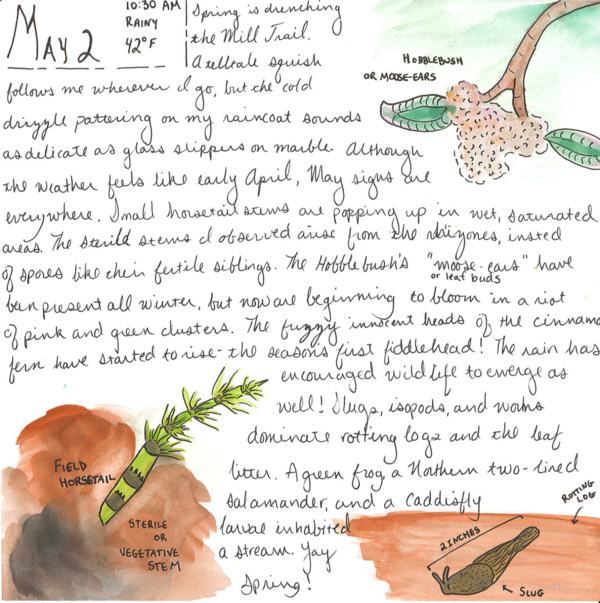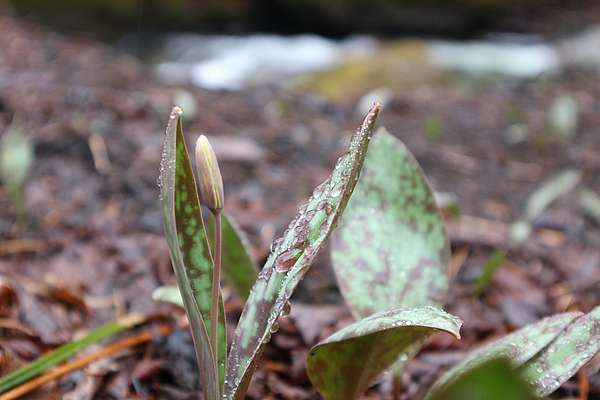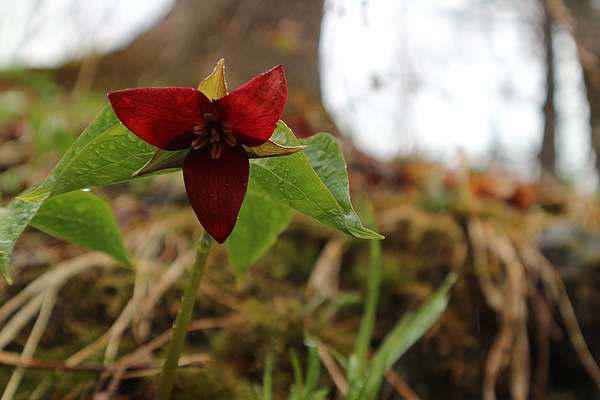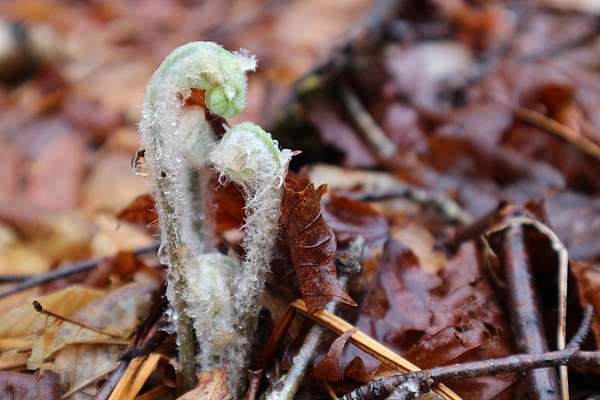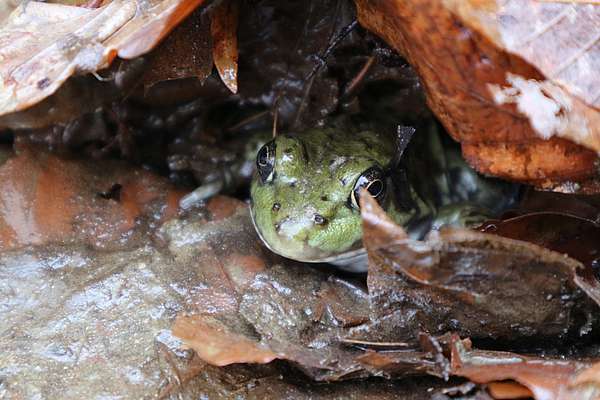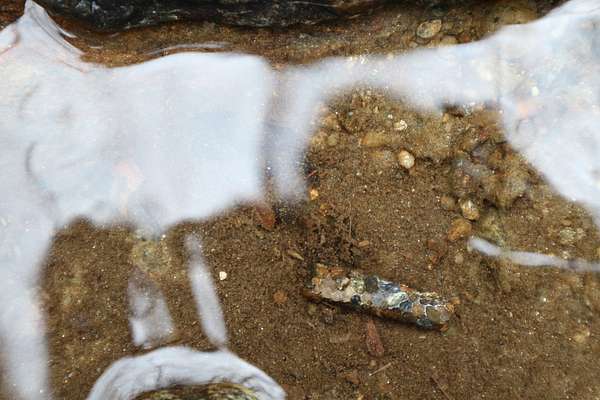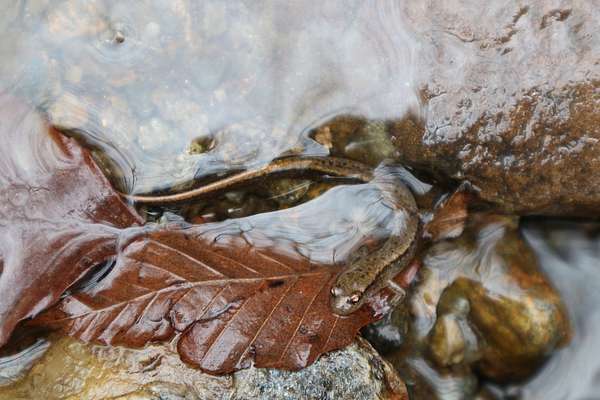Spring is drenching the Mill Trail. A telltale squish follows me wherever I go, but the cold drizzle that patters my raincoat sounds as delicate as clinking champagne flutes. Although the weather feels like early April, May signs are everywhere.
New buds are emerging from the trout lily leaves, which have spread in patches over the whole site. I spotted the first fiddlehead of the season in this area: the fuzzy innocent heads of the cinnamon fern. Trillium buds have opened to reveal deep purple flowers, striking against the new green groundcover. Trillium is also known as Stinking Benjamin or Wake-Robin. Wake-Robin is pretty clear, as trillium blooms coincide with the robins returning. Stinking Benjamin comes from the pungent odor emitted by the otherwise beautiful blooms. Why do they stink so bad? While other late blooming flowers attract pollinators with flashy colors and bright large blooms, trillium precedes the bees and butterflies of late spring and summer. Instead it attracts a different suitor with drastically different tastes. The ‘rotting meat’ smell and dark raw color tends to attract green flies, who are out and about looking for a place to lay their eggs. Instead, attracted to the meatlike mirage of the trillium, the flies aid in its reproduction by pollinating!
Several small horsetail stems are popping up in very wet areas. These sterile stems are not fertile; they grow from rhizomes. The fertile stems emerge from spores, the result of sexual reproduction. The name, horsetail, can be pretty obvious by the shape of the plant. It's latin group name, Equisetum, comes from equus meaning horse and seta meaning bristle. It is also called scouring rush, due to its high amount of silica, an abrasive substance. Horsetail has been used to polish and clean for thousands of years.
The hobblebush, whose ‘moose ears’ (leaf buds) have been present all winter, are showing a riot of tight pinkish green clusters. The common name of moose ears seems very self-explanatory by the appearance of the fuzzy leaf buds. The name, hobblebush, comes from the presence of the bush throughout winter. Wooded areas may be otherwise easy to bushwhack without its stubborn presence, hobbling all those who try to forge through it.
The rain encourages certain wildlife as well. Slugs, isopods, and worms swarm the top, inside, and underside of rotting logs respectively. A green frog scared me almost as much as I probably scared her as I moved aside the leaf little along a drainage stream. They can be distinguished from American bullfrogs by the lateral fold that runs down their whole back as opposed to just around their tympanum. The green frog was female, judging by the size of the tympanum, the ear drum behind the eye. The female’s tympanum is roughly the size of her eyes, and the male’s is significantly larger. I also found the beautifully engineered armor of a caddisfly nymph. They collect anything from their environment to build their own shells. Some artists have put gemstones, gold flakes, and diamonds in a caddisfly’s tank and photographed its glamorous construction of these materials. It was terrified into its shell and would not come back out while I was hovering. I also startled a northern two-lined salamander from its hiding spot under a smooth water worn rock in the stream. Yay, spring!
